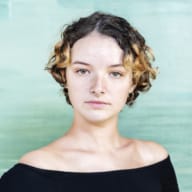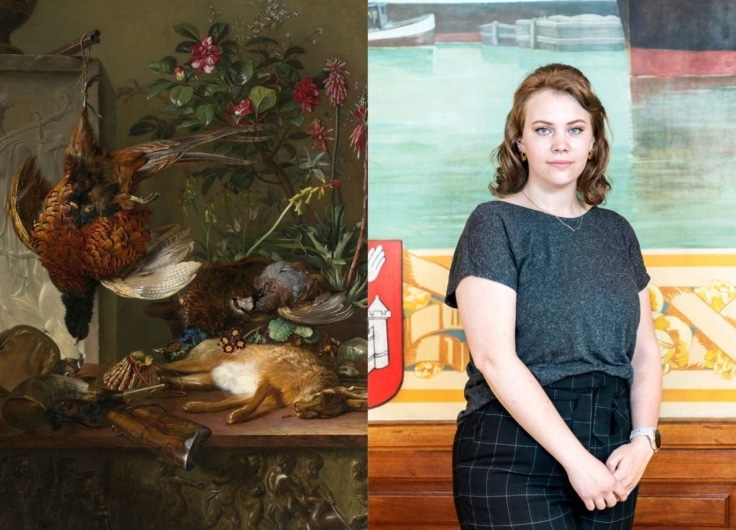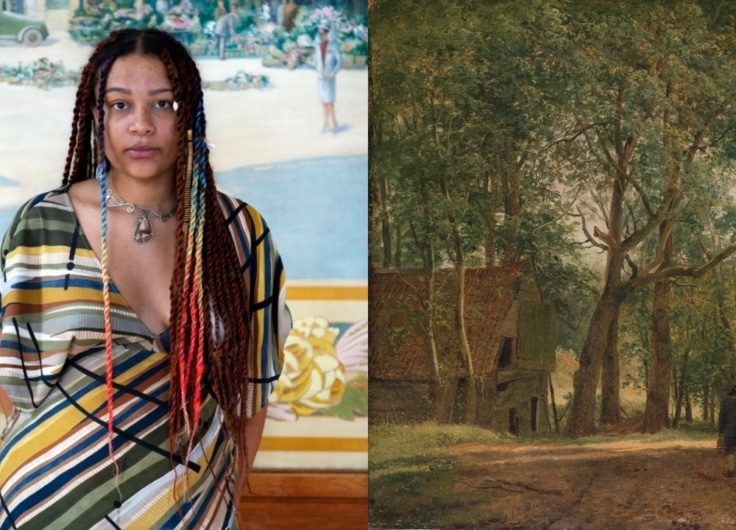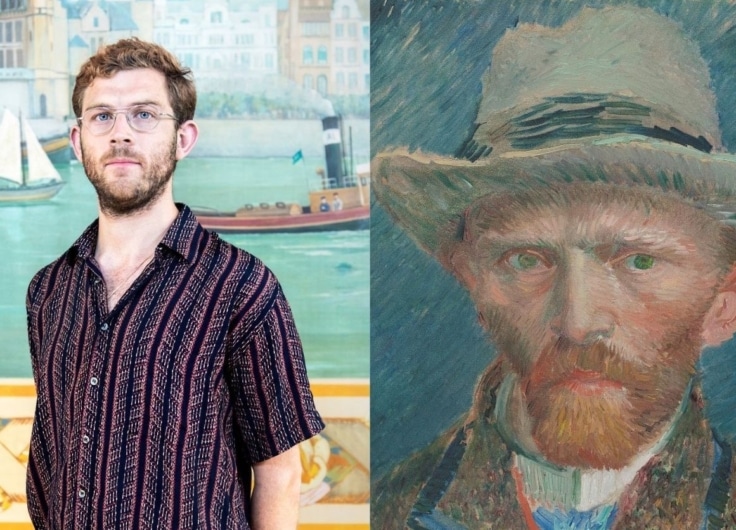Eighteen young authors have brought nineteenth-century artefacts from the Rijksmuseum to life. They have taken inspiration from the question: what do you see when you look at these objects with an eye for invisible labour? We join Marieke Ornelis as she looks at Portrait of a Young Woman, with ‘Puck’ the Dog, painted by Marie-Thérèse Schwartz in c. 1879 – c. 1885. ‘Between us lie a bated breath and unseen wealth.’
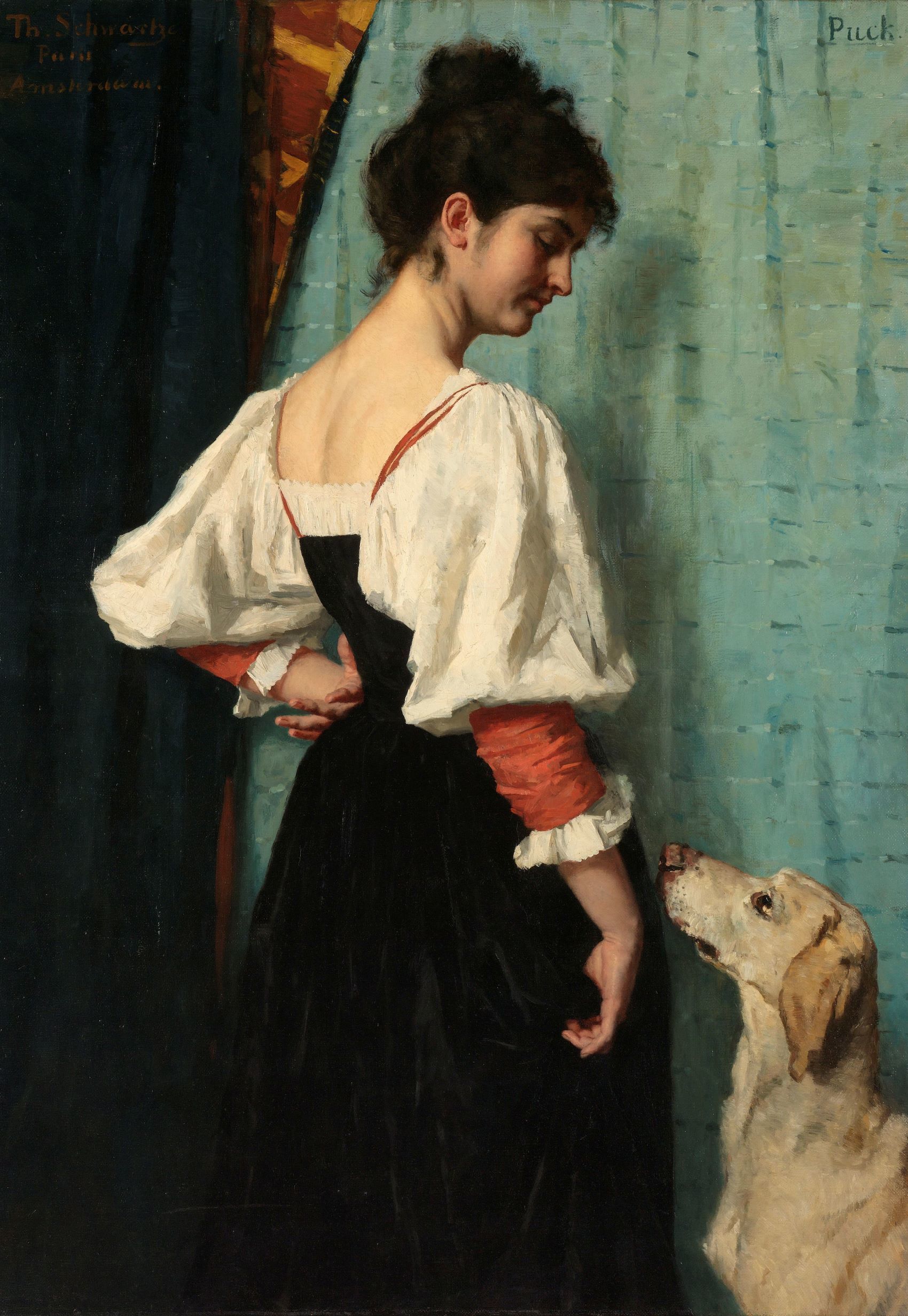 Marie-Thérèse Schwartz, Portrait of a Young Woman, with ‘Puck’ the Dog, c. 1879 – c.1885
Marie-Thérèse Schwartz, Portrait of a Young Woman, with ‘Puck’ the Dog, c. 1879 – c.1885© Rijksmuseum Collection, Amsterdam
Oil on canvas
1.
Lower your shoulder.
That’s it.
And mind your chin.
I didn’t give her a name, only a face.
Between us lie a bated breath and unseen wealth.
I register the things that aren’t normal –
my brushes and my apron my lack of modesty the fact that I’ve got all the time in the world and a studio to boot
She’s a collection of folds
She’s beautiful she can be folded like her sheets made of linen.
which she turns down while she opens her arms and her windows.
I register the things that do seem normal –
the dog Puck in the corner my canvas stretched tight the clanging of the pans beneath the squeaking stairs
I’m a set of perspective lines.
I collect love letters and graphite, sadness nestles
in my underbelly.
The conventions remain clear:
with each brushstroke our likenesses fade.
Between us lies my gaze.
2.
She’s not hanging entirely straight.
Hold on.
It was better over there.
I didn’t give her a name, only a wall.
They love women you can frame.
Types of frameworks include:
the border around a painting a pink casement on a street corner
the edges of the mirror the cover of the cookbook
Deep down in the museum basement they lie.
tarnished yellowed faded covered in sheets
drenched in varnish.
They love women you can piss on.
They love women made of chalk and clay
paper plasticine and pixels
algorithmic muses and marble whores.
They love women you can gawp at.
I hijack the line of vision, for each sight line one female perspective.
The audio guide:
rooms with the romance of soft sweet bodies pause here to your left you see a person reduced to a womb to your right a dangerous witch a slattern please pause here please
There’s the signature,
Thérèse Schwartze.
Please pause here please look here.
3.
Is there a word
for this colour?
Combed through the archives.
found nothing.
I didn’t give her a name, only a story.
You can layer words like coats of paint.
It starts with material:
the language – don’t add industrial maxims
let alone dilute with water.
Then it’s useful to cover the entire scene,
smudges bring bad luck.
After that you draw from life,
and think about the use of negative space, composition.
Apply the sentences thick over thin on the canvas.
Blend the lines incrementally with linseed oil or turpentine.
With each layer, delay the inevitable cracking of the image,
make the construction visible before finally unmasking it.
Then there are things for which you’ll never find the words,
the red of the stains in her pricey underskirts the blue of the rooms in which she embroidered against the clock the hours in which she posed for her portrait
There are people whose story you’ll never fully know.
She surrendered her name, slipped out of her reflection.
A portrait is a decision.

